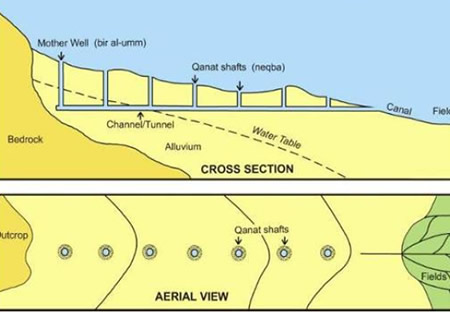Severe Shortage of Water in Northern Iraq
In a war thorn nation, where people live between bombs,militants,military, there are other problems too.. A UNESCO study finds that Water shortage is fueling displacement of people in northern Iraq(Also Referred as Southern Kurdistan).Over 100,000 people in northern Iraq have been forced to evacuate their homes since 2005 because of severe water shortages, a UNESCO study finds. Drought and excessive well pumping have drawn down aquifer levels in the region, causing a dramatic decline of water flow in ancient underground aqueducts, known in Iraq as karez, upon which hundreds of communities depend.
The study is the first to document the effects of the ongoing drought on the karez systems, which thousands of Iraqis have depended upon for their drinking water and farming for centuries. Designed especially for the arid climate, karez are renowned for their ability to remain productive even during dry spells. However, UNESCO’s study confirms that since the onset of drought four years ago, 70% of the active karez have dried up. The overexploitation of groundwater by modern pumped wells has also been a major factor. By August of this year, only 116 of 683 karez systems in northern Iraq still supplied water to their beneficiaries. Before the onset of drought, the greatest threats to the karez in Iraq were political turmoil, abandonment and neglect. Today, few people in Iraq know how to maintain or repair them, contributing to their state of disrepair.
According to the study, swift and urgent action is needed to prevent further population displacement. UNESCO estimates that a single karez has the potential to provide enough household water for nearly 9,000 individuals and irrigate over 200 hectares of farmland. In economic terms, that translates into 300 additional tons of grain per year or up to $160,000 of income generated at current market prices. The study identified 50 communities that will benefit from karez restoration works.
Abour Karez
 |
Karez (subterranean aqueducts; kahrez in Persian)—also known as qanats, aflaj, foggara, khettara and other names in other places—are engineered to collect groundwater and direct it, through a subsurface tunnel with a gradual slope, to surface canals that provide water to settlements and agricultural fields (adjacent figure). Karez are found in 38 countries worldwide (39 including Palestine/West Bank), in both western and eastern hemispheres, though most are concentrated in the Middle East region and the frequency of karez increases in proximity to Iran, where the greatest number and variety of karez are found. Only Iran and Oman (and possibly Afghanistan and Pakistan) have more infiltration karez than are found in Iraq.
A Karez has the potential to produce 864,000 L/day, enough drinking water for 8,640 community members and 1,440 households. At the same time, a karez has the potential to provide sufficient irrigation water to produce 299 tons of grain/yr on 203 hectares of newly irrigate farmland, generating upwards of $162,748 in new agricultural production every year.
Some 380 karez were active in 2004. Since the onset of drought and the accelerated proliferation of wells from 2005-2009, 70% of the karez that were flowing five years ago have been abandoned. Population declines have averaged almost 70% among the villages adversely affected since drought and excessive pumping began drying up so many karez.
UNESCO has been working with the Government of Iraq to rehabilitate karez systems since 2007, and plans to launch the new Karez Initiative for Community Revitalization in 2010, a project that aims to help rural communities rebuild their karez and promote better livelihoods.
Source: UNESCO
